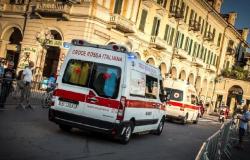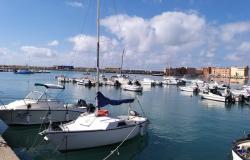Renovations are still growing Pilotta Monumental Complex of Parma. After the colossal restoration and reopening of the numerous internal museums, the Parma circuit is now enriched with three new, prestigious locations: they are theAncient Spezieria of San Giovanni Evangelistaalso in Parma, the Torrechiara Castle in Langhirano, in the provincial territory, and the Archaeological Park and Antiquarium of Veleia in Lugagnano Val D’Arda, in the province of Piacenza. The management of the venues – as per the decree of the Ministry of Culture of last February 9th – will pass from the Emilia-Romagna Regional Museums Directorate to Pilotta itself.
The single ticket for the Pilotta Monumental Complex circuit
The aggregation is not only intended to be a way to relaunch the sites more or less distant from Pilotta within an increasingly efficient circuit, but also to propose a single ticket for all, which saves on individual entrances. In fact, from 25 June, visitors will be able to access all the locations of the Complex with a cumulative ticket of 25 euros, with a visit to Pilotta on the day of purchase and booking and visit to the other sites within 30 days. Specifically, the Castle and the Archaeological Park and Antiquarium are already regularly open to the public, while the Antica Spezieria will open on 24 June after the redevelopment works.
The article continues below
The Pilotta Monumental Complex grows
“After the inauguration of the Nuova Pilotta, which saw the completion last November of the project carried out by the former director Simone Verde, now at the helm of the Uffizi Galleries, we are very proud to announce this further enrichment which sees the inclusion of three new museum locations: the Ancient Spezieria of San Giovanni Evangelista, in Parma, the Torrechiara Castle and the Antiquarium Archaeological Park of Veleia“, commented the director of the Complex Stephen The Occasion. “This expansion represents an important opportunity to enhance and promote our cultural heritage, also uniting Veleia with the Archaeological Museum, born in the eighteenth century thanks to the excavations conducted in the archaeological area. Our commitment is to continue preserve and share history and beauty of these extraordinary places“.
Brief history of the Antica Spezieria di San Giovanni Evangelista
The first news on the existence of a pharmacy in abbey complex of San Giovanni Evangelista in Parma they date back to 1201, but its foundation could be even earlier (the monastery dates back to 980 AD). The apothecary – which at the beginning was at the sole service of the Benedictines and then became public – today boasts furnishings from the end of the 16th century, while the layout of the rooms underwent a radical change in 1766 when the Benedictines had to secularize the pharmacy. In 1896 the State acquired the premises and reopened them to the public in 1951, and with them a collection of mortars, albarelli, vases, stills and other objects collected from various parts. Of the eight original environments, today we see four: the Fire Room, the Mortar Room, the Mermaid Room and the Well Room.
Brief history of Torrechiara Castle
Located on the Apennines south of the city of Parma, strategically on top of a hill, Torrechiara Castle is one of the most notable examples of fortified architecture in Italy. Built between 1448 and 1460 as the residence and defense instrument of Pier Maria Rossi, Count of San Secondo, the fortress shows the influence of the Sforza-Visconti castles. Consisting of the manor, the ancient upper village, an internal courtyard, four corner towers and underground rooms – which can be visited after recovery work concluded in 2006 -, the Castle houses rooms frescoed with naturalistic, fantastic and grotesque themes. Noteworthy are the decorations in the rooms of Jupiter, the Pergola, the Victory and the Velario, which can be traced back to Cesare Baglione – who also created the large hall of the Acrobats with Giovan Antonio Paganino – and the famous Camera d’oro, a wedding room which owes its name to the pure gold leaves that once covered the tiles on the walls. Since 2004 there has also been a new layout.

Brief history of the Archaeological Park and Antiquarium of Veleia
The b was founded following the Roman conquest of the territory of the Ligurian tribe of the Veleates in the 2nd century BC on the site of the pre-existing indigenous center. The city developed on a system of sloping terraces, with a forum built on an artificial shelf. Paved in the time of Augustus by the magistrate Lucius Licinius Priscuswas surrounded on three sides by a portico onto which shops and public spaces opened, while on the opposite side the complex was closed by the basilica, where the 12 large marble statues from Luni, depicting members of the Julio-Claudian family, today at the National Archaeological Museum of Parma. Cultural heritage of the Region since 1760, when the Duke of Parma Don Filippo di Borbone began its exploration, Veleia is today one of the most important archaeological centers in northern Italy. The Antiquarium, recently rearranged, houses finds on key moments in the city’s history.
Giulia Giaume
Artribune is also on Whatsapp. Simply click here to subscribe to the channel and always be updated







